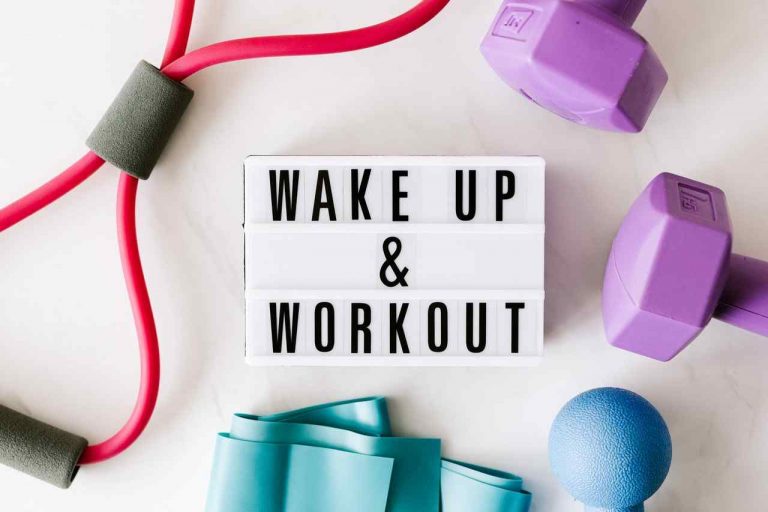When you start a workout routine, you go through a range of emotions.
You start with the excitement of the possibilities, and the doubt and fear of failing yet again.
Kate is a friend of mine who recently started a new fitness routine.
After years of being off and on about her fitness, she had every reason to believe that she was going to fail.
She tried every diet in the book. She lost weight. She gained it back.
She was tired of it.
Determined to make it stick this time, she started to get back into things. Throughout the process, these were the things that we found worked in creating a routine that she could stick with.
Keep reading to learn how you can start your own workout routine that you can stick with and create results.
1. Write Your Fitness Goals
The very first step in starting a new fitness routine is to set a goal. It doesn’t have to be around weight loss or body fat percentage.
You can set a goal to do big-girl push-ups on your toes. You can set a goal to do a few unassisted pull-ups. Your goal could be going to the gym three times a week for 3 months.
Set a goal that is achievable and make sure it’s something that lights you up.
In other words, a little excitement will help you get started.
You’ve probably heard of SMART goals. SMART Goals apply to fitness goals too. When you set a goal and write it down, you exponentially increase the likelihood that it will come to pass.
Remember, a SMART goal is:
Specific
Measurable
Attainable
Realistic
Time-Bound
Think about what you truly want to accomplish, and then write your goals down.
I’m a big advocate of having a vision board and encourage you to make one for your fitness goals, too.
2. Have a Plan to Get There
Now that your goals are written down, it’s time to make a plan to make them happen.
How do you make a fitness plan? It’s like reverse engineering. Start with the end in mind and work backwards.
Let’s say that you set a goal to do 10 push-ups on your toes in 12 weeks.
Take a look at your starting point. What are you able to do now? You might be able to do 3-4 pushups on your knees.
Now put a program in place that will help you progress in your push-ups. Get to 10 push-ups on your knees. Then try 1-2 push-ups on your toes, and gradually increase that number.
If you’re just starting to exercise, you might not even know where to begin. That’s when you ask for help.
Reach out to someone you trust and ask them for guidance in putting a plan together with you.
You don’t have to be ultra-specific in your plan, but you do need to lay out the steps that will help you achieve your goal.
3. Start Slowly
The biggest mistake that I see people make when they start an exercise program is to go all out.
They’re at the gym every day. They’re doing these hard workouts because they did them years ago.
The thing is, they hadn’t done those workouts in years. Their bodies have changed. They’re a little tighter and weaker.
It’s just what happens to the body when you become sedentary.
They don’t realize this and then they get injured.
And it’s back to the sedentary lifestyle. They get frustrated and drop out.
You have to start slowly, especially if you haven’t worked out in a while. You have to start according to where your body is now.
Give your body time to adapt. Start with going to the gym 2-3 days a week. Then work your way up.
As long as you’re consistent, your body will catch up with your ambition.
4. Do What You Love
Fitness doesn’t have just one meaning. It doesn’t mean that you have to get 6-pack abs.
Fitness is what it means to you. For some, it’s being able to keep up with the kids. For others, it means being competitive in their particular sport.
The true beauty of fitness is that no one owns the definition. You do.
That’s why I encourage people to do what they love. Being fit doesn’t mean that you have to power lift your way to fitness.
If you love it, then do it.
If you’d rather go hiking, then do that.
The reason why I recommend doing something you love is simple. When you do something you love, the more likely you are to stick with it.
Think of it this way, if you can’t stand kettlebell lifting, would you get out of bed or drag yourself to the gym to get it done?
Not likely.
Now, if you loved getting on the rowing machine and doing a TRX workout, would you be likely to do that?
Most likely, yes.
5. Fuel Your Body Properly
In order to make the most of your workouts, you have to feed your body the right fuel.
You also want to make sure you time your meals according to your workouts.
Eating a big meal right before a workout won’t help you. It’ll only make you feel slow and sluggish. Wait a few hours before you work out after having a big meal.
Right after your workout, have a snack or a small meal that has protein and carbohydrates to replenish the energy stores in your muscles.
And of course, make sure you keep your body hydrated throughout the day, even on rest days.
Just a slight drop in hydration can lead to a decrease in performance.
Does that mean that you should reach for a sports drink after you exercise?
No, not at all.
Sports drinks tend to be full of sugar, and most people don’t need to drink them after a workout. They’re great if you’re working out outdoors for at least an hour in hot weather. On the other hand, if you just did a 30-minute HIIT workout, stick with water.
6. Plan Your Workout Times
You have your own internal clock. Some people naturally are early risers, while others are night owls.
Do your best to align your workout times with your internal clock, whether you want to get up early or you like to workout later in the day.
Yes, you’ll have to make adjustments in your schedule, but you want to make sure that you have the energy to make it to your workouts and do them well.
Put these times in your calendar and treat them like important meetings.
I know that it’s not always realistic to stick to your workout plan. That’s why you’ll want to read tip # 8, too.
7. Get Support
Any exercise program, whether it’s a beginner exercise program or an advanced one, is very difficult to complete without the right support.
Without support, you’re trying to accomplish your goals in isolation. That can be difficult to do, and we human beings thrive on community.
Studies have shown that when you start a workout routine with social support, you’re more likely to stick with it over the long term.
How can you get support so you can reach your exercise goals? Ask.
Tell your friends, tell people at the gym, tell your significant other.
Share your goals with them and bring them on the journey with you.
Ask a few people to check in with you periodically to see how you’re progressing and to cheer you on. Reach out to them when you’re not feeling that confident in reaching your goals.
8. Always Have a Backup Plan
You’re a busy person.
It always helps to have a couple of quick bodyweight workouts you can pull out in a pinch.
There will be days when you’re slammed, or you didn’t get any sleep.
There are plenty of reasons why you’ll be pulled away from your routine. That’s why you should always have a plan B in your pocket.
When you make your workout plan, ask yourself what you’ll do in case you can’t make it to the gym as planned.
For example, you plan to go to the gym for a 6 am workout on Monday, Wednesday, and Friday of this week.
You make it to Monday’s workout, but you didn’t sleep well on Thursday and you’re booked with meetings all day on Friday.
Your plan B might be to sleep in and get to the gym on Saturday morning or Friday after work.
This helps keep you on track with your workouts and gives you the flexibility to shuffle your workouts along with your busy schedule.
9. Build Rest Days into Your Routine
You cannot underestimate the power of rest days.
As you start your new fitness routine, you will be sore. There is no way around it.
Delayed onset muscle soreness happens 24-72 hours after your workout. It’s a normal part of the adaptation process.
During the first few weeks, you’ll want to be sure your body can perform the workouts. If you’re too sore to do anything, the quality of workouts will suffer.
That’s why you’ll want to start working out 3 days a week with a day of rest in between. You might only be able to start off with two days a week.
That’s OK.
Many beginner fitness enthusiasts start by going every single day. What often happens is that they get injured and have to stop. I
Make sure that no matter where you’re at in your fitness, you’re getting plenty of rest. That includes getting a good night’s sleep, too.
10. Focus on Feeling Good
The whole point of being fit is to feel good. Period.
You’re not supposed to be miserable, it’s not about going until you puke. That’s pure ego getting in the way.
A healthy lifestyle feels good. You’re taking care of yourself and putting yourself first, as strange as it may seem.
There are times in your fitness journey where you’re not seeing the results that you’d like or you just don’t feel like doing anything.
That’s Ok to acknowledge, and this is where self-discipline comes into play.
One way to shift your focus is to focus on feeling good. Smile, think about having your result already. Act from that place.
It takes constant vigilance to maintain your focus and keep a positive spirit, but the more you keep winning those daily battles, the more your life transforms.
Not just your health and fitness, but everything you touch.
Start a Workout Routine Today
If you’ve been thinking about starting a workout routine, you might be hesitant because of past failures.
Don’t look at them as failures, think of them as steps for success.
Would you like some ideas that will help you start a workout routine today? Be sure to read the Ultimate Workout Guide for Women.



